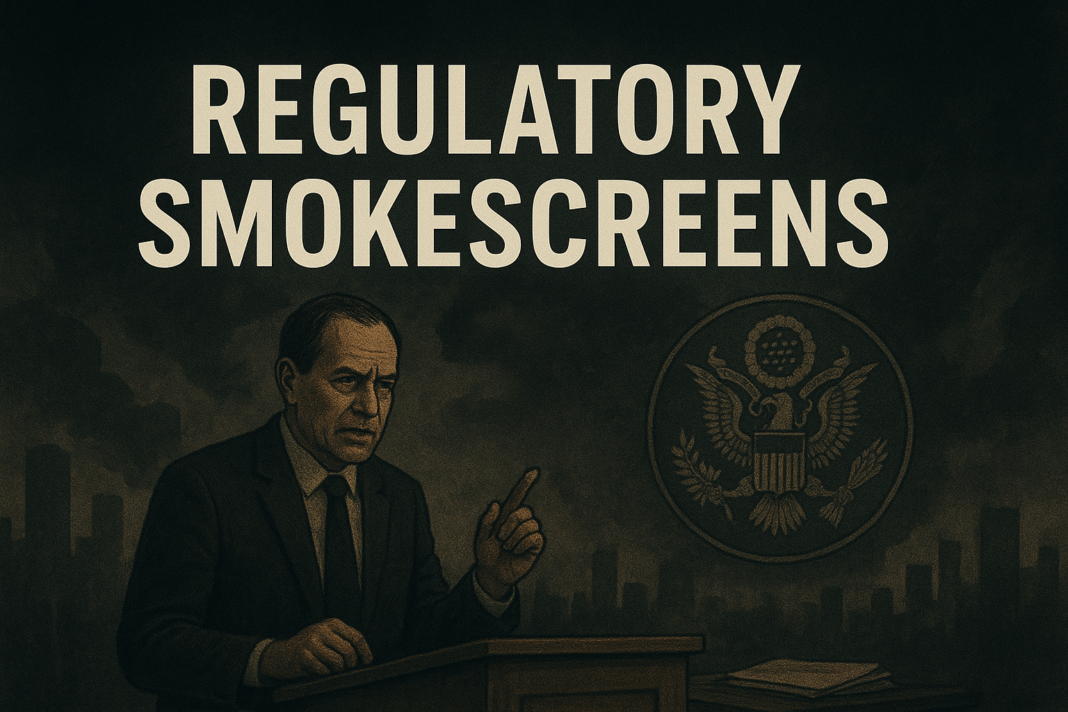“Regulation is not a shield for the people. It is a mask for the system.”
🌑 Introduction: The Theater of Protection
When scandals erupt, regulators appear on stage. Cameras flash, headlines scream, and officials announce “strict action.” It feels like justice.
But the truth is darker: regulation is often performance theater — designed to calm the crowd, protect the system’s credibility, and allow the same manipulations to continue behind closed doors.
⚖️ The Illusion of Enforcement
Regulators love to display authority, but dig deeper:
-
Slap-on-the-Wrist Fines
Multi-billion-dollar institutions caught rigging LIBOR, FX rates, or precious metals often pay fines smaller than their profits from the scam. It’s the cost of doing business, not punishment. -
No Real Accountability
Traders, CEOs, or institutions rarely face prison. Settlements are written, NDAs signed, and the machine resets. -
Cosmetic Rules
New regulations often target the surface (like banning “flashy” ads for retail brokers) while leaving systemic corruption — dark pools, insider lobbying, algorithmic warfare — untouched.
🕴 The Revolving Door
The relationship between regulators and institutions is not adversarial. It’s symbiotic:
-
Ex-Regulators Become Insiders
Many officials leave their posts to join the same banks or hedge funds they once “supervised.” They bring insider knowledge and political connections with them. -
Insiders Become Regulators
Executives cycle back into government positions, shaping rules in favor of their old friends.
The fox doesn’t just guard the henhouse. The fox writes the rules for it.
🕸 Who Really Benefits?
Despite all the noise, ask yourself: who do regulations actually serve?
-
Institutions: Rules are written with loopholes they helped design.
-
Regulators: Budgets, media coverage, and credibility increase every time they “crack down.”
-
Retail Traders: Left with complex jargon, restricted tools, and a false sense of safety — while still being hunted by bigger players.
Regulation isn’t built to protect you. It’s built to preserve the illusion of a fair market.
🔮 Historical Proof of the Smokescreen
-
2008 Financial Crisis: Banks caused a global meltdown through toxic mortgage products. Regulators bailed them out, while millions of ordinary people lost homes, jobs, and savings.
-
LIBOR Scandal: Interest rates were rigged for years. The punishment? A few fines and no systemic overhaul.
-
Flash Crash 2010: Regulators blamed a lone trader, ignoring the deeper role of high-frequency bots and institutional flows.
In every case, regulators managed optics, not justice.
⚡ Key Takeaways
-
Regulation is theater, not protection. It preserves trust in markets, not fairness.
-
Fines are token payments. For institutions, they’re business expenses, not deterrents.
-
The revolving door ensures collusion, not independence. Regulators and insiders are often the same people wearing different suits.
-
Retail is the least protected. You are shown rules, while the real game continues in the shadows.
-
Believing in regulation is as dangerous as believing in the myth of “free markets.”
⚠️ Important Note for Readers
The system survives because people believe someone is watching over it. But the watchers are part of the system. The sooner you stop depending on regulators, the sooner you begin to protect yourself.
🔗 Explore All Lessons in This Series
- Lesson 1: The Illusion of Free Markets
- Lesson 2: How Big Money Shapes Price
- Lesson 3: The Psychology of Losing Traders
- Lesson 4: Regulatory Smokescreens
- Lesson 5: The Survival Blueprint
- Essential Questions & Answers

